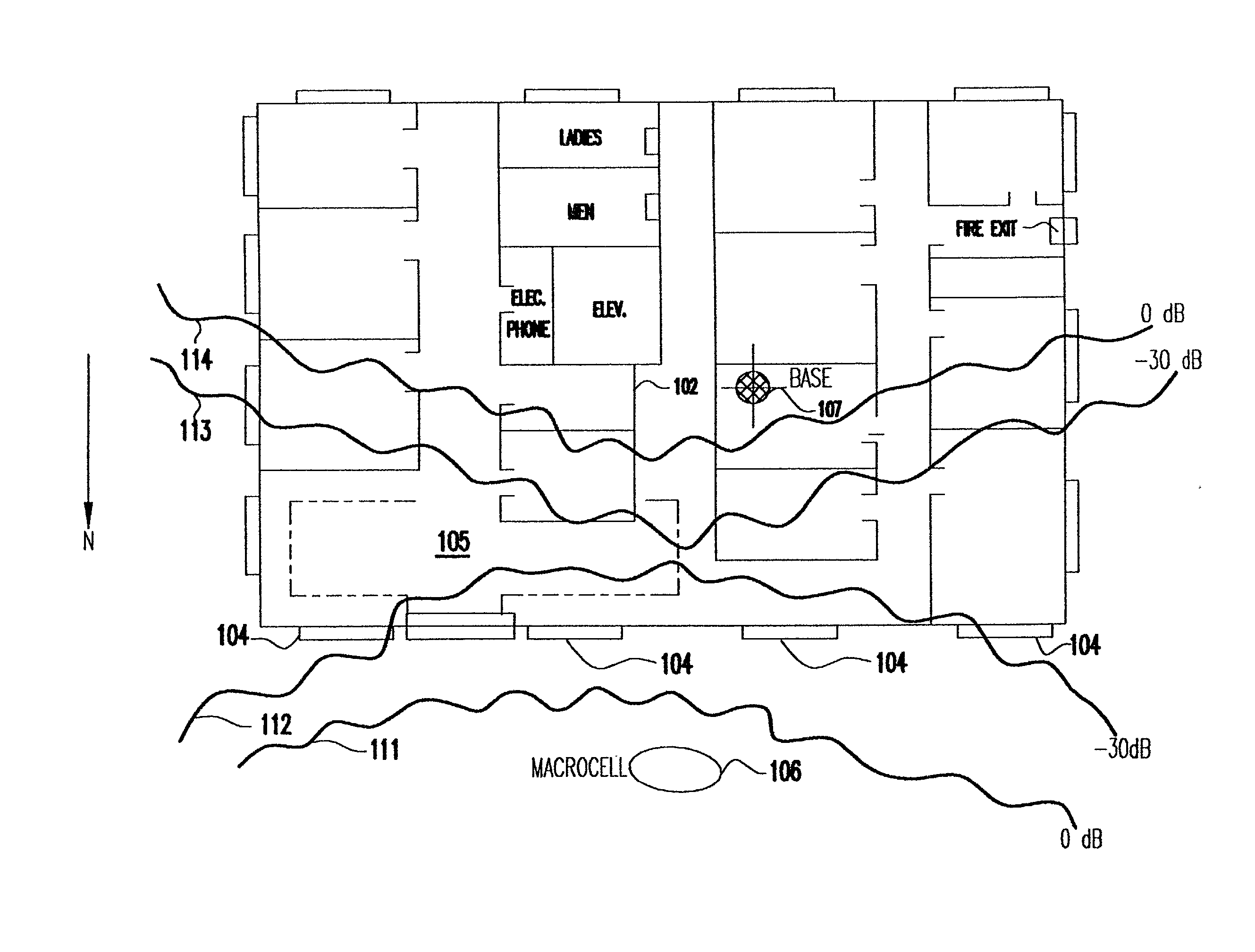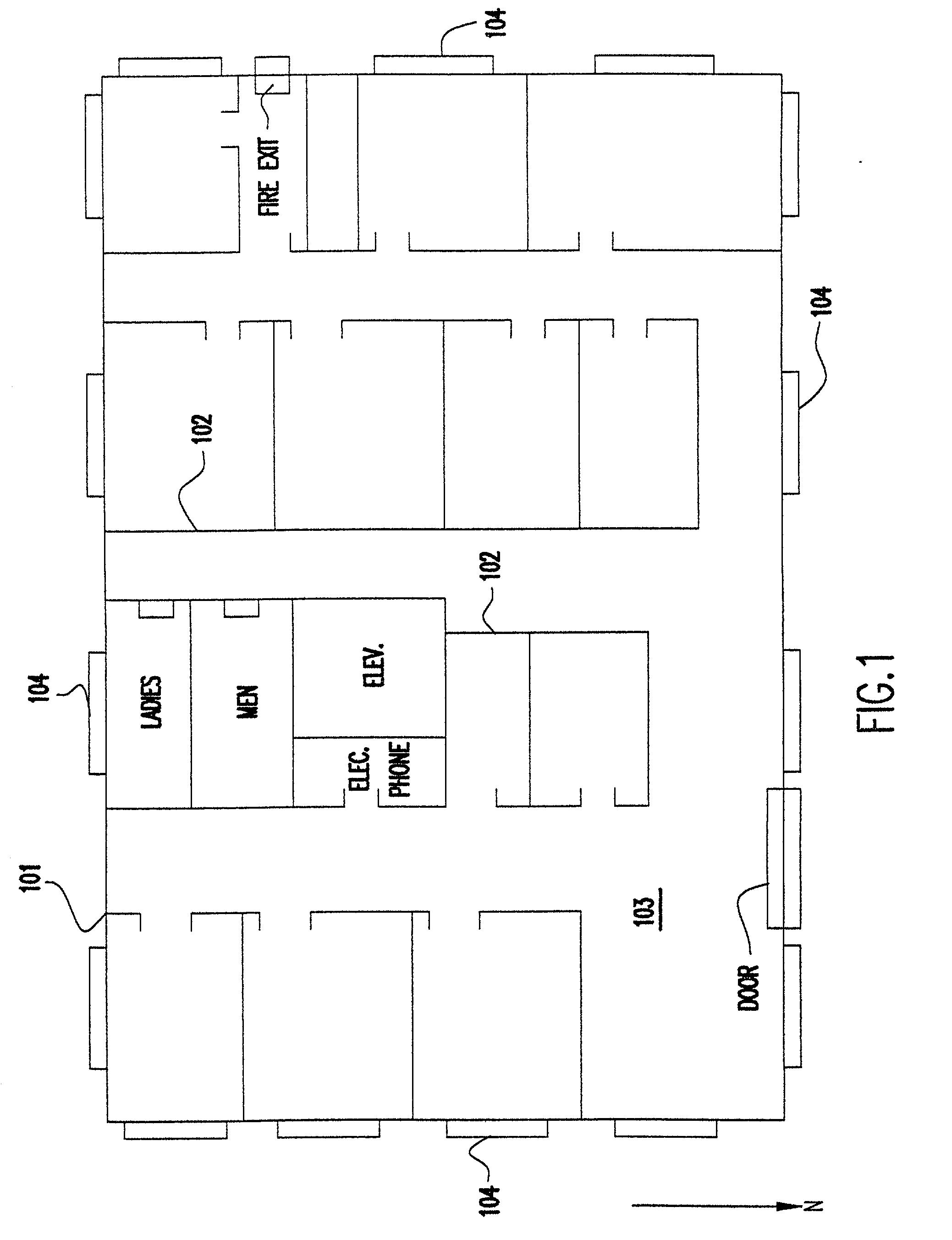Method and system for analysis, design, and optimization of communication networks
a communication network and management system technology, applied in the direction of transmission monitoring, machines/engines, instruments, etc., can solve the problems of insufficient coverage, a "dead zone," interference in indoor wireless pbx (private branch exchange) system or wireless local area network (wlan), and the cost of in-building and microcell devices providing wireless coverage within a 2 kilometer radius is diminishing
- Summary
- Abstract
- Description
- Claims
- Application Information
AI Technical Summary
Benefits of technology
Problems solved by technology
Method used
Image
Examples
Embodiment Construction
[0031] Using the present method, it is now possible to assess the RF environment in a systematic, organized fashion by quickly viewing signal strength, or interference levels, or other wireless system performance measures. The current embodiment is designed specifically for use with the SitePlanner.TM. suite of products available from Wireless Valley Communications, Inc. of Blacksburg, Va. However, it will be apparent to one skilled in the art that the method could be practiced with other products either now known or to be invented. (SitePlanner is a trademark of Wireless Valley Communications, Inc.)
[0032] Referring now to FIG. 1, there is shown a two-dimensional (2-D) simplified example of a layout of a building floor plan. The method uses 3-D computer aided design (CAD) renditions of a building, or a collection of buildings and / or surrounding terrain and foliage. However, for simplicity of illustration a 2-D figure is used. The various physical objects within the environment such ...
PUM
 Login to View More
Login to View More Abstract
Description
Claims
Application Information
 Login to View More
Login to View More - R&D
- Intellectual Property
- Life Sciences
- Materials
- Tech Scout
- Unparalleled Data Quality
- Higher Quality Content
- 60% Fewer Hallucinations
Browse by: Latest US Patents, China's latest patents, Technical Efficacy Thesaurus, Application Domain, Technology Topic, Popular Technical Reports.
© 2025 PatSnap. All rights reserved.Legal|Privacy policy|Modern Slavery Act Transparency Statement|Sitemap|About US| Contact US: help@patsnap.com



